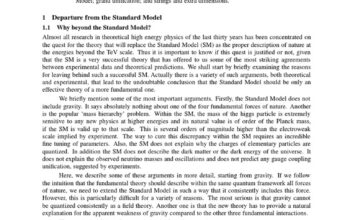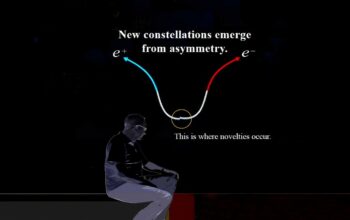Gamma rays are high-energy electromagnetic radiation that hold significant importance in astrophysics. They are products of complex astrophysical processes, including nuclear reactions in stars, the annihilation of particles and antiparticles, and various exotic cosmic phenomena. One particularly intriguing aspect of gamma rays is their possible connection to the enigmatic dark matter that pervades our universe. This discourse aims to explore the concept of gamma-ray galactic haze and its implications regarding dark matter. Through this examination, we seek to elucidate the intricacies of these phenomena and unveil potential connections that could deepen our understanding of the cosmos.
The galactic haze, an obscured region of the Milky Way, has drawn the attention of astrophysicists due to its distinctive gamma-ray emissions. This diffuse emission, which envelops our galaxy, is characterized by a soft spectrum, exhibiting energies ranging from the radio to the gamma-ray wavelengths. The origin of this haze remains a subject of intensive scientific investigation. Multiple hypotheses have been formulated to explain the intense gamma radiation, with prominent candidates including cosmic rays, nearby pulsars, and the aforementioned dark matter interactions.
Cosmic rays, primarily composed of protons and atomic nuclei, are a fundamental source of the gamma-ray emissions observed within the galactic haze. These energetic particles originate from various cosmic sources, including supernova remnants and active galactic nuclei. As they interact with the interstellar medium and stellar photons, they produce gamma rays via processes such as inverse Compton scattering and pion decay. While cosmic rays provide a compelling explanation for the soft gamma-ray spectrum observed, they do not comprehensively account for all the features of the galactic haze. This inadequacy raises the question of whether additional sources may contribute to the gamma-ray emissions and their spectral characteristics.
In parallel, the hypothesis that pulsars could play a significant role in the production of the galactic haze has garnered attention. Pulsars, or rapidly spinning neutron stars, emit beams of electromagnetic radiation, including gamma rays. The cumulative effects of numerous pulsars within the Milky Way could conceivably contribute to the observed diffuse gamma-ray emissions. Some models suggest that these radiation emissions could overlap and create a haze-like structure within the galactic plane, where the density of pulsars is considerably higher. However, even with the presence of pulsars, there remains a substantial portion of the gamma-ray haze that is not explained. This void in our understanding prompts scientists to delve deeper into alternative explanations, including the elusive nature of dark matter.
Dark matter, constituting approximately 27% of the universe’s mass-energy composition, remains one of the most profound enigmas in contemporary physics. Its presence is inferred indirectly through gravitational effects on visible matter, as its interaction with ordinary matter is predominantly non-collisional. Therefore, detecting dark matter particles directly poses a monumental challenge. One prevailing theory postulates that dark matter may exist in the form of weakly interacting massive particles (WIMPs), which could decay or annihilate, leading to the production of gamma rays. The association between dark matter and the gamma-ray galactic haze is a tantalizing prospect that beckons both theoretical and observational scrutiny.
Various studies have attempted to relate the properties of the gamma-ray haze with potential dark matter signatures. For instance, the spectral features displayed in the gamma-ray emissions could hint at dark matter decay processes. Remarkably, some researchers have observed an excess of gamma ray emissions in certain regions of the Milky Way, particularly in the Galactic Center. This excess could potentially correspond to the annihilation of dark matter particles, generating photons with the observed energy levels. These research findings engender a renewed interest in exploring the fundamental nature of dark matter and its role in the dynamics of our galaxy.
The prospect of connecting dark matter with the galactic haze not only fuels scientific inquiry but also amplifies the profound implications for our understanding of the universe. It encourages the development of novel experimental methods, including sensitive gamma-ray telescopes capable of capturing minute emissions. The quest for elucidating the origins of the galactic haze, intertwined with dark matter, propels high-energy astrophysics into an exciting frontier. Consequently, this intersection between gamma-ray observations and theoretical physics may yield insights that transcend current models of cosmology and particle physics.
Moreover, synthesizing knowledge from astroparticle physics, cosmology, and observational astronomy continues to be critical in addressing unresolved questions within the dark matter paradigm. As technologies evolve, so too do our methodologies for investigating the cosmos. The digital era offers advanced capabilities for collecting and analyzing vast datasets, enhancing the precision of gamma-ray measurements. Increased collaboration across disciplines and institutions is imperative, leveraging expertise in statistics, computational modeling, and experimental design to fortify research initiatives surrounding gamma rays and dark matter.
In conclusion, gamma rays, particularly as they pertain to the galactic haze, represent a crucial avenue of exploration in understanding the universe. While localized explanations involving cosmic rays and pulsars offer partial elucidation, the potential connection to dark matter introduces a profound layer of complexity. As our observational tools advance, the interrelationship between gamma-ray emissions and the invisible constituents of the universe may yield revolutionary insights into astrophysics, cosmology, and the very fabric of reality itself. This pursuit of knowledge reaffirms the notion that amidst the vast, mysterious cosmos, deeper connections await discovery, inviting both curiosity and scientific rigor.












